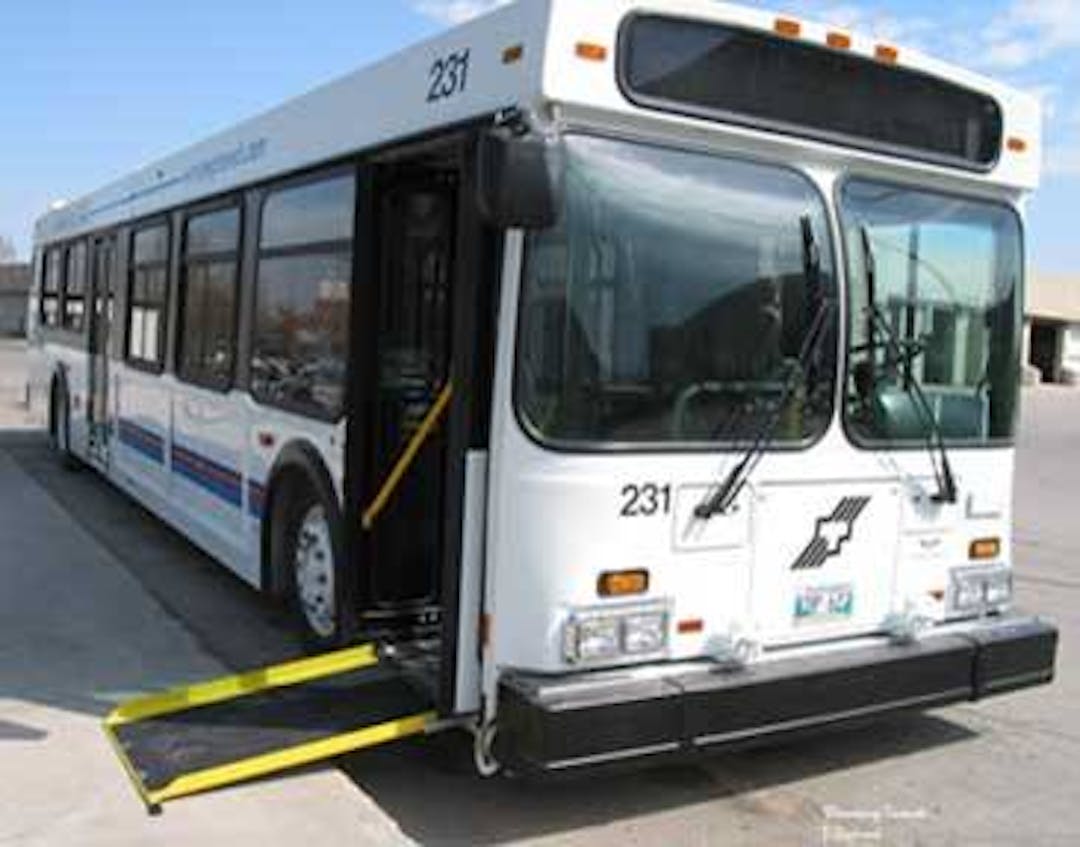Transit Priority Seating Review
Consultation has concluded

More information on transit priority seating available on our Accessible Transit webpage.
Introduction
The City of Winnipeg is committed to improving the accessibility of our transit system. One aspect of this involved establishing designated priority seating areas on conventional buses.
To better understand the needs of transit users and develop processes that recognize the needs of transit users with disabilities, the City asked for feedback through a survey and discussion forum. Your feedback, along with a jurisdictional scan and Winnipeg Transit data were used to make recommendations for the future of priority space on Transit buses and a Council approvedContinue reading
More information on transit priority seating available on our Accessible Transit webpage.
Introduction
The City of Winnipeg is committed to improving the accessibility of our transit system. One aspect of this involved establishing designated priority seating areas on conventional buses.
To better understand the needs of transit users and develop processes that recognize the needs of transit users with disabilities, the City asked for feedback through a survey and discussion forum. Your feedback, along with a jurisdictional scan and Winnipeg Transit data were used to make recommendations for the future of priority space on Transit buses and a Council approved Priority and Courtesy Seating Area Policy.
Background
On May 19, 2020, the Standing Policy Committee on Infrastructure Renewal and Public Works asked the public service to review the issues of accessibility for Transit customers related to policies for strollers, priority and courtesy seating and operator assistance.
This review builds on the February 2019 discussion paper outlining the Accessible Transportation Standard Terms of Reference, as part of the Accessibility for Manitobans Act (AMA). The provincial Accessibility Advisory Council (AAC) has drafted a Transportation Accessibility Standard in accordance with the AMA, part of which outlines new standards for priority seating and mobility aid spaces for transportation service providers, including Winnipeg Transit.
Issues with first-come, first-served priority seating:
- Winnipeg Transit experiences high volumes of transit riders at different points in the day and this leads to crowded buses and ‘pass-ups’ (when riders waiting are passed because the bus is too full to accommodate them).
- There are challenges with pass-ups for all transit riders and that is why the City is working on a Transit Master Plan that proposes a high frequency network.
- Accessible spaces (seats at the front of the bus where the benches flip up) on transit buses are limited and there is currently a ‘first come, first served’ approach.
- A first-come, first-served approach to priority space is not aligned with the Accessibility For Manitobans Act transportation standard.
You may also read the summary of similar policies from other cities.
-
Discussion 1:
over 5 years agoShare Discussion 1: on Facebook Share Discussion 1: on Twitter Share Discussion 1: on Linkedin Email Discussion 1: link3 ResponsesCLOSED: This discussion has concluded.What are the main barriers you face when using conventional transit, as it is currently configured?
-
Discussion 2:
over 5 years agoShare Discussion 2: on Facebook Share Discussion 2: on Twitter Share Discussion 2: on Linkedin Email Discussion 2: linkCLOSED: This discussion has concluded.Consider the following scenario:
Two caregivers with strollers are occupying the priority seating area at the front of a transit bus. At the next stop, a transit user in a wheelchair is waiting to board. There is no room left on the otherwise full bus for the strollers to move to accommodate the user in a wheelchair.
What should happen, and what should the transit user in a wheelchair be able to expect?
-
Discussion 3:
over 5 years agoShare Discussion 3: on Facebook Share Discussion 3: on Twitter Share Discussion 3: on Linkedin Email Discussion 3: linkCLOSED: This discussion has concluded.Should the City of Winnipeg implement both a Priority Seating area and a Courtesy Seating area on all Transit buses? Why or why not?
Please consider:
Priority Seating is for the use of passengers with a disability. These seats are located close to the front of the vehicle. Customers are expected to respect and obey the purpose of the designated seating area, which means that if you are sitting in one of these designated seats, you MUST vacate the seat for a passenger with a disability.
Courtesy Seating is intended to provide additional seating for people who will benefit from having a seat near the front of the vehicle including:
- seniors
- expectant mothers
- adults traveling with infants or small children
- any other passenger who may benefit from a seat
If you are sitting in one of these designated seats, it is requested that you give up your seat to those who need it.
Timeline
-
Project begins: May 2020
Transit Priority Seating Review has finished this stage -
Jurisdictional scan and data collection: May – August 2020
Transit Priority Seating Review has finished this stage -
Public engagement: August 18 – September 15, 2020
Transit Priority Seating Review has finished this stage -
Public Engagement Summary posted: October 2020
Transit Priority Seating Review has finished this stage -
Report to Council: December 2020
Transit Priority Seating Review has finished this stage -
Policy Implementation: Fall 2022
Transit Priority Seating Review is currently at this stage
How can we help?
Visit winnipeg.ca/publicengagement to learn about some of the ways we can accommodate those who may need alternative access to engagement or information.
For inquiries or those who require alternate formats, interpretation or any additional accommodations to participate please contact winnipeg.ca/311 or 311.
FAQ
- Why did you do this project?
- What is priority seating? What is courtesy seating?
- What was the previous priority seating policy?
- Why did you change the priority seating policy?
- How will potential changes regarding priority and courtesy seating be communicated to the public?
- Why would you need both Priority Seating and Courtesy Seating areas on a bus?
Engagement type

Listen & Learn
Share feedback on pre-determined options.


